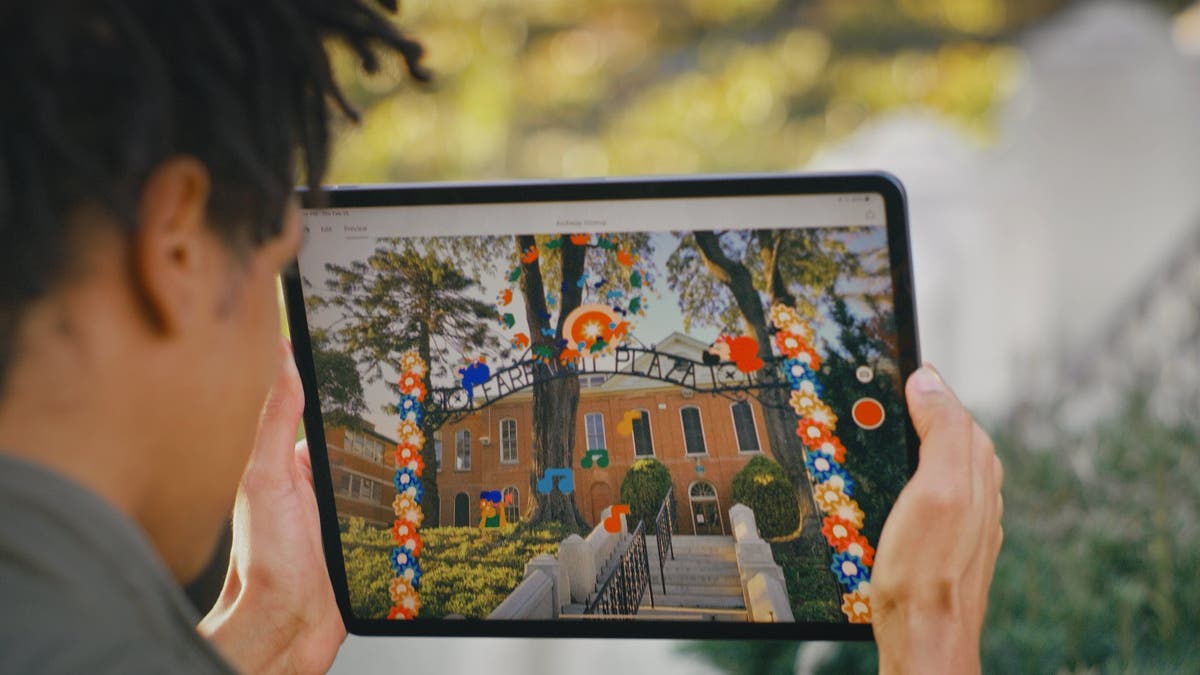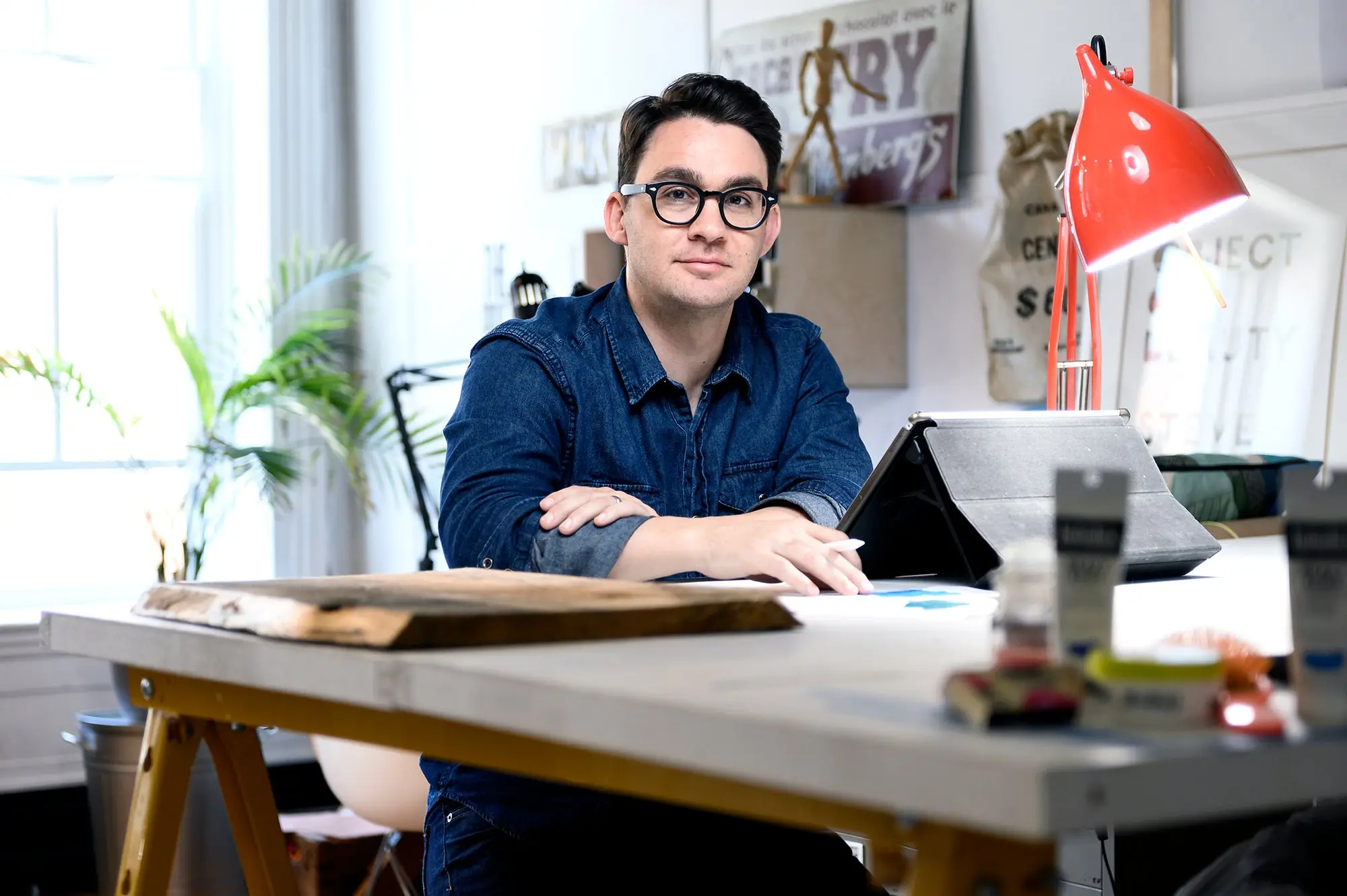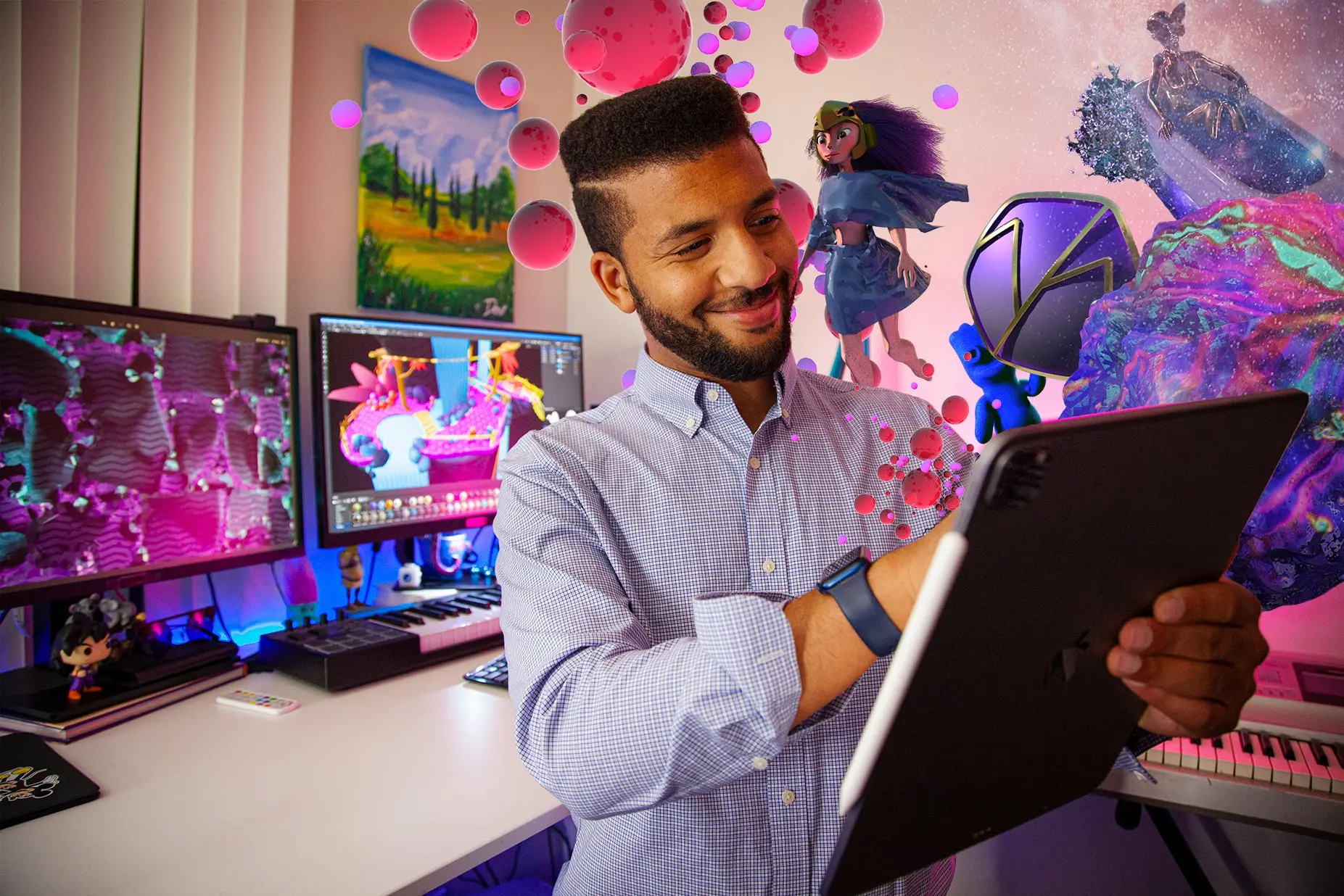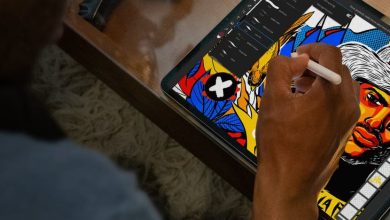Five things we learned from creators using augmented reality

Unleash your imagination into the world, try it now.
Storytelling has always been critical for creators to design and produce compelling narratives. With advancements in augmented reality (AR) and virtual reality (VR), creators across the globe are branching out into immersive storytelling and relying on the latest technologies to tell that story. We asked creators across the globe how they extend their current workflows into AR with Adobe Aero and their advice for others getting started.
Contents
1. The barriers to create augmented reality are diminishing.
No matter where they are in the world or their preferred creative outlet or tool, a common thread amongst creators was that augmented reality is a lot less intimidating than creators initially thought it would be.
Darren Booth a Canadian-based illustrator and lettering artist who recently transitioned from working traditionally to digitally says, “AR looks more intimidating to learn than it actually is. If you know the basics of creative programs like Photoshop and Illustrator than learning Aero is very intuitive.” Booth’s passion for AR turned into teaching it and some of his tutorials are available on Behance. A commitment to continuous learning is useful when growing any new skill, but particularly for the emerging field of AR.
Darren Booth of Canada.
Don Allen Stevenson III, a 3D-storyteller based in Los Angeles similarly shared that bringing a growth mindset and a spirit of experimentation helps for exploring AR. “My first piece of advice is not to be afraid of being experimental with your ideas. Since there are no standards set in stone it means it’s primed for new creative ideas that are outside the current norms,” says Stevenson.
Don Allen Stevenson III of Los Angeles, California.
See what it’s like for yourself in the quick tutorial below.
2. Creators are enjoying entirely mobile workflows but still use the desktop for more complex creations.
As more Adobe tools become available for mobile devices, including Illustrator and Fresco for iPad, creators can choose to have an entirely mobile workflow for authoring and experiencing AR and add immersive features within only a few clicks.
Michael Fugoso an Austin-based designer in the aerospace industry uses Illustrator on iPad and then brings the layers he creates into Aero and offsets those layers to create a depth effect that makes his illustrations pop. “The seamless synching of my files on the Creative Cloud has made it easier to work between tools and on-the-go, and now I can work with my files wherever I am,” says Fugoso.
Michael Fugoso of Austin, Texas.
Although AR artists enjoy the ability to create wherever they are, those with more complicated workflows preferred starting on Aero for desktop to organize their assets first and then hopped on their mobile devices to test and adjust their files.
Nadine Kolodziey based out of Frankfurt and Berlin works across various tools including Mixamo, Adobe Stock, Illustrator, and Photoshop to build her miniature worlds initially on the desktop before taking the project on-site at a location that inspires her. Once on location she can adjust her world to the specific site. “I get my inspiration from the natural world and want my work to feel like gardens that emerge from the existing landscape so I will ping-pong from the desktop to the mobile to adjust to the conditions of the time and place of where I will be filming,” says Kolodziey. The ability to build contextually aware pieces that can be site-specific blurs the lines between the digital and physical worlds.
Nadine Kolodziey of Frankfurt and Berlin, Germany.
3. Sharing AR can be an intimate experience while being globally accessible.
There’s something about experiencing an AR scene in your living room that feels very intimate. During the pandemic when Berlin was in a lockdown Susi Vetter craved an escape so she put her imaginative skills as an illustrator to work creating little dioramas that would transport her from her own living room to expansive nature scenes and shared them with others across the globe. “I enjoyed being able to have these joyful shared experiences with others, and it helped me to get through some of the tough times,” says Vetter.
Susi Vetter of Berlin, Germany.
Another creator in China shared a similar experience. Wenjie Zheng, a designer and vector illustrator based in Shenzhen, wanted to celebrate her sister’s birthday in a meaningful way since her sister has not been able to return home since the start of the pandemic. Zheng says, “Aero has given me an opportunity to break the limitations of physical distance and bring creativity and joy that we can experience together even though we are a part.” Sharing and collaborating on AR experiences is bringing the world closer together.
Wenjie Zheng of Shenzhen, China.
Dominika Jezewska based in Poland has been collaborating across continents with Israa Al Balushi based in Oman on an Aero piece and says, “‘Cross-cultural’ often speaks of differences and how that stands out, but for us working together pinpointed where we intersect even though we come from very different backgrounds. It was fascinating to see how our project evolved so seamlessly. It’s a very special experience for both the artist and the audience because the artist can invite the audience into their own world regardless of where they are, and the same way the audience has the opportunity to more actively participate and engage with the art.”
Dominika Jezewska of Poland.
Israa Al Balushi of Oman.
4. Immersive storytelling brings viewers in as active participants.
The freedom for viewers to move around and choose how they explore and interact with a piece allows for more robust experiences than ever before. Chris Kelly, a San Diego based VFX creator utilized dimensional sound in his Underwater Orchestra to allow viewers to create their own soundscape. Each coral piece in the scene acts as an instrument and as viewers walk closer to each distinctive coral they hear a specific instrumental loop and the result is a visceral symphonic experience. “The spatially aware features of Aero are an absolute highlight for me. Reactive behaviors and audio are something that exist in video games, but not many other forms of media. This type of engagement will take viewers out of the passive role and into a more interactive world,” says Kelly. Spatial awareness and the ability of the viewer to move around is changing the way we tell stories.
Chris Kelly of San Diego, California.
5. You can help us shape the future of AR. Join us.
There is no one way to experience an augmented reality scene and similarly there is no one way to tell a story. This means creators from all backgrounds and disciplines can uniquely define how they tell stories that will define the future of AR. This is an opportunity to let your unique creative voice shine through. What story will you tell? Get inspired, download Aero for free, follow on Instagram and Twitter to connect to a global community of AR creators, and be sure to tag your creations with #AdobeAero for a chance to be featured.
Source : Adobe
















